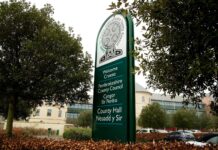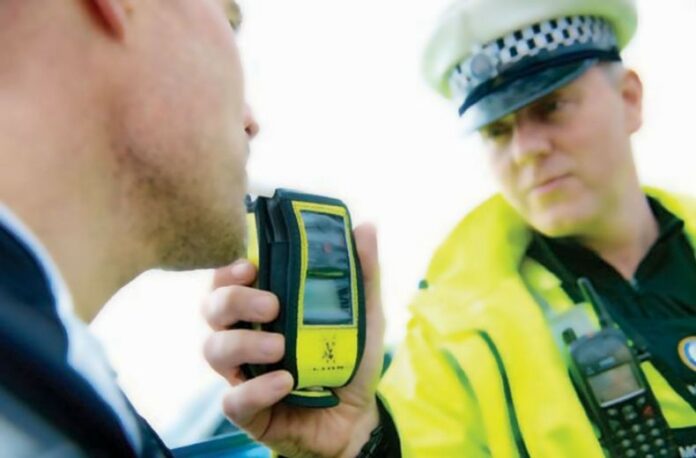The Met Police, Northern Ireland, and Avon and Somerset Police recorded some of highest figures between May and September 2022
● So far this year, there have already been 11,105 arrests made across the UK for drink-driving offences
● Lighter evenings and social calendars could be the reason why so many drivers are caught drink-driving. But ignorance could be the biggest problem, as only 1 in 10 (10%) think they’re most likely to be caught by police this time of year.
● Tools like the morning after calculator can help drivers work out whether they’re within the legal driving limit the day after drinking. And this could be useful, as figures show how more than a third (36%) of drivers were arrested for drink-driving the day after.
● Confused.com car insurance expert, Louise Thomas warns drivers of the risks when drink-driving and why backup plans are essential.
Motorists are being urged to stay off the road after drinking alcohol, as UK police forces made more than 16,000 arrests last summer.
That’s according to new data gathered by Confused.com, who found that drivers in London, Northern Ireland, and Avon and Somerset could be some of the worst offenders. That’s according to data obtained through a Freedom of Information request to UK police forces.
According to the data, the Met Police arrested the most amount of drink-drivers last summer. Approximately 1,937 arrests were made by police officers within their area of responsibility between May and September. Meanwhile, officers in Northern Ireland made 1,105 arrests, and 1,035 arrests were made by police in Avon and Somerset.
Top offending areas:
|
Police Force |
May to September 2022 |
2022 total |
|
Metropolitan |
1,937 |
5875 |
|
Northern Ireland |
1,105 |
3037 |
|
Avon and Somerset |
1,035 |
2583 |
|
West Yorkshire |
841 |
2557 |
|
West Midlands |
808 |
2403 |
With some areas of responsibility so high, the data shows how drink-driving offences could be a big problem. That’s as data shows how a total of 61,769 drivers were caught drink-driving throughout 2022. And so far this year, a total of 11,105 drivers have been caught over the limit when behind the wheel.
Drink-driving offences happen at any time of year, but the summer months seem to be some of the worst. It could be because evenings are lighter for longer and there’s often more opportunity for driver’s to socialise. And further research gathered by Confused.com proves this. In a survey of 2,000 UK drivers, almost 3 in 5 (63%) drivers said they’ve driven after drinking alcohol. But only 1 in 10 (10%) said they think drivers are more likely to be caught drink-driving during the summer. In comparison, more drivers (20%) said they felt they’re likely to be caught drink-driving during the Christmas period. This lack of awareness could explain why arrests rates are so high during the summer, as drivers could be turning a blind eye to police presence on the road.
But the research also suggests that many drivers aren’t just being caught out after a drink on the same day. In fact, the morning after seems to be just as prolific for drink-driving offences. More than a third (36%) of those caught drink-driving in the past were caught the morning after. And 1 in 3 (33%) of all drivers surveyed said they’d driven the morning after drinking. But only 1 in 8 (17%) calculated how much time had passed in relation to how much alcohol they had drunk before choosing to drive. To help drivers understand if they could still be over the limit, Confused.com has created a morning after calculator. This tool helps give drivers a rough estimation on when they could be fit to drive.
And although the summer can be enjoyed by everyone, research shows how young people are some of the worst offenders. Drivers aged 18 – 24 admitted that they’d drink 3 alcoholic drinks, on average, before getting behind the wheel. This was higher than any other age group, who, on average, said they’d likely have 2 alcoholic drinks or fewer. That’s why drivers are urged to be sensible and only drive if they’re not drinking. And having alternative options, such as accommodation, a designated driver or money for public transport could keep everyone safe. And if drivers do need to drive the day after, they should allow the necessary time to pass so that they’re safe to drive.
It can be easy to get carried away with alcohol. But if caught drink-driving, the consequences aren’t taken lightly. Drivers could face driving bans of up to 12 months, but if caught twice in 10 years, the ban could go up to 3 years. Drivers could also face a prison sentence and a hefty fine. The conviction would also be noted on your driver’s licence as ‘DR’, which stays on for 11 years(2). And don’t forget the effects it could have on your car insurance. It’s likely that a driving conviction could lead to more expensive insurance costs, as you’re more risky to an insurer.
Louise Thomas, motor expert at Confused.com car insurance comments:
“When the weather is hotter and evenings become lighter, it can be tempting to make plans at the last minute. But if you’ve driven somewhere and then are left in a position where alcohol is involved, you might find yourself in a bit of a dilemma.
“If you’re drinking alcohol, don’t drive. Doing so could have huge consequences. Not just on your driving record, but you could be putting other road users’ safety at risk too. If you need to get home the same day, the sensible option is to ask someone to pick you up, take public transport or even book accommodation for the evening.
“And don’t forget that alcohol can stay in your system hours after drinking, including the morning after. So if you find yourself in a position to drive the day after drinking, you should check first that you’re safe to get behind the wheel. That’s where our morning after calculator can help. By telling the calculator what you had to drink the night before, drivers can determine if they could still be over the drink-drive limit before getting behind the wheel.”
Help keep news FREE for our readers
Supporting your local community newspaper/online news outlet is crucial now more than ever. If you believe in independent journalism, then consider making a valuable contribution by making a one-time or monthly donation. We operate in rural areas where providing unbiased news can be challenging. Read More About Supporting The West Wales Chronicle























